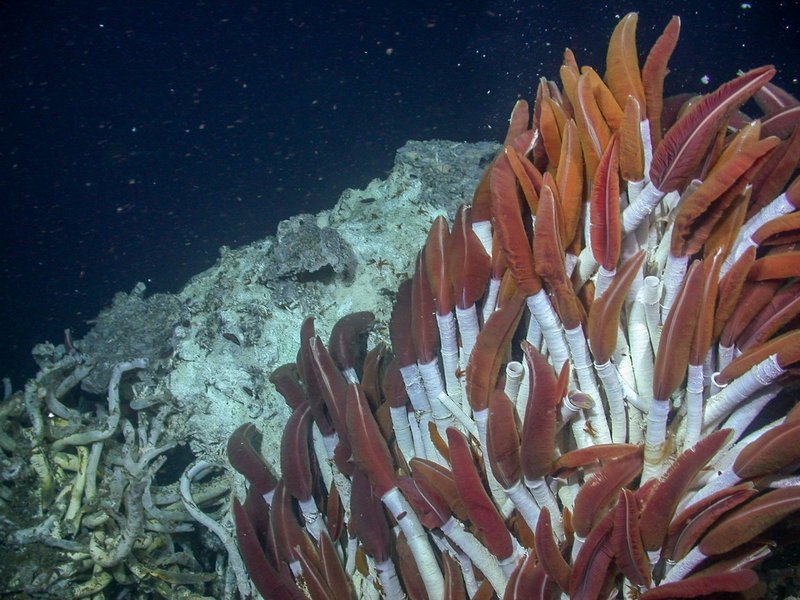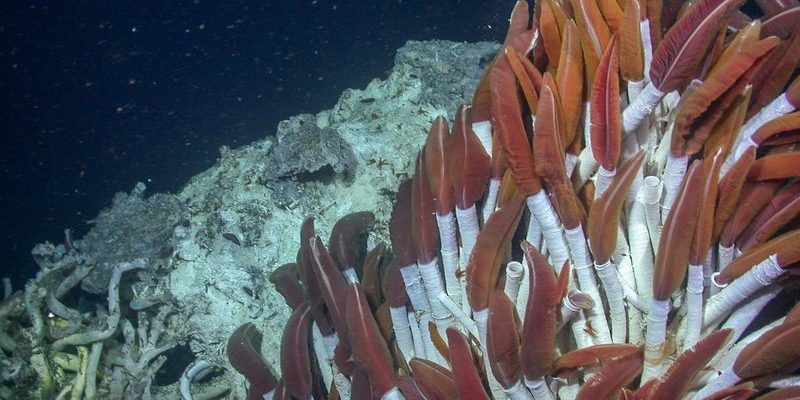
Riftia pachyptila is more than just a worm; it’s a marvel of evolution. Residing in habitats with intense heat and pressure, it relies on chemosynthesis rather than sunlight for energy. To understand its rhythms and patterns, researchers dive deep into the ocean’s depths, tracking how seasonal changes impact these creatures. It’s a bit like following the migratory patterns of birds but in a much more extreme and hidden environment. So, what exactly happens throughout the year with these incredible creatures? Let’s dive in!
Understanding Riftia Pachyptila’s Habitat
Riftia pachyptila primarily lives in hydrothermal vent communities, where superheated water rich in minerals gushes from the ocean floor. These vents create a unique ecosystem that supports a variety of life forms, primarily through chemosynthesis, which allows organisms to convert chemicals into energy. This environment is akin to a bustling city in the middle of darkness, where the inhabitants have adapted to thrive with little to no sunlight.
In this harsh setting, Riftia pachyptila grows large, often reaching lengths of up to 3 feet. They anchor themselves into the seafloor with a structure called a tube, which protects their soft bodies and helps them filter nutrients from the surrounding water. Their survival is intricately linked to the temperature and chemical composition of the vent water, making them highly sensitive to environmental changes.
Researchers often use submersibles and remotely operated vehicles (ROVs) to explore these depths. This technology allows them to monitor the vents and the creatures inhabiting them closely. Think of it as a deep-sea adventure, where scientists get to peek into a world that most of us will never see firsthand.
The Seasonal Cycle of Activity
Like many organisms, Riftia pachyptila exhibits different activity levels throughout the year. The changes in ocean temperatures, nutrient availability, and even the chemistry of the water all play significant roles in how these creatures behave. During warmer months, for example, they might be more active, feeding and growing at a faster rate due to increased nutrient flow from the vents. It’s like summer for them, where everything gets a little more lively.
In contrast, when temperatures drop or conditions become less favorable, their activity may slow down. During such times, they might conserve energy, curling into their tubes to withstand harsher conditions. This seasonal ebb and flow echo nature’s broader rhythms, reminding us that all life is connected and influenced by the environment around it.
Studying these seasonal patterns helps scientists predict how these creatures might respond to changing oceanic conditions, providing a glimpse into the future of marine ecosystems. It’s not just interesting; it’s crucial for understanding how climate change could impact biodiversity in the oceans.
Impact of Environmental Changes
Environmental changes can have profound effects on Riftia pachyptila and its habitat. Factors such as rising ocean temperatures, changes in ocean acidity, and pollution can disrupt these delicate ecosystems. For instance, an increase in water temperature might lead to more frequent and intense thermal vent activity, altering the nutrient dynamics and potentially stressing the tube worms.
Moreover, these environmental changes can also affect the chemistry of the water, impacting the chemosynthetic bacteria that Riftia relies on for energy. Without these bacteria, the entire food web within the hydrothermal vent communities could be at risk. It’s a chain reaction that demonstrates how interconnected everything is below the surface.
Researchers work hard to monitor these changes through various methods, including collecting samples and utilizing sensors. By understanding the correlation between environmental shifts and Riftia activity, they can better predict how global climate changes could affect sea life. It’s like being detectives trying to piece together clues about the ocean’s health.
Monitoring Techniques and Technologies
Monitoring Riftia pachyptila involves various sophisticated techniques and technologies. Scientists often deploy remote sensing tools and underwater cameras to observe these creatures in their natural habitats. By using these technologies, they can gather valuable data on their population sizes, growth rates, and seasonal activities without disturbing their environment.
Another method is in-situ experimentation, where researchers directly observe Riftia and other vent species in their habitat. This hands-on approach allows them to study how specific factors, like water temperature or chemical concentration, influence the worms’ behavior and health. Imagine a naturalist in the wild, taking notes and making discoveries about a hidden world.
Additionally, some scientists utilize modeling software to analyze patterns and predict future changes in the populations of Riftia pachyptila. By combining different data sources, they can develop a clearer picture of how these creatures might adapt to changing environments. This blend of technology and research forms a comprehensive approach to understanding these remarkable organisms.
The Importance of Monitoring Riftia Pachyptila
You might be wondering why monitoring Riftia pachyptila matters. Well, these tube worms are not just fascinating creatures; they are indicators of ocean health. By studying their populations and behaviors, scientists can infer the status of their entire ecosystem. If Riftia is thriving, it usually signals a healthy environment; if they’re struggling, it could mean trouble.
Furthermore, as climate change continues to threaten marine ecosystems, understanding how species like Riftia respond gives us insight into broader ecological shifts. Their survival—and the survival of countless other organisms—depends on stable environments, which are becoming increasingly rare. So, every bit of data collected helps build a better understanding of these threats.
By monitoring these ecosystems, researchers also contribute to conservation efforts and help inform policies aimed at protecting marine environments. This work not only benefits scientists but also the world at large, as it contributes to the health of our oceans.
Monitoring Riftia pachyptila activity across the seasons is not just a scientific endeavor; it’s a vital aspect of understanding marine life and ecosystem health. Through innovative techniques and technologies, researchers can uncover the secrets of these fascinating tube worms and their unique habitats.
As we learn more about these creatures and their responses to environmental changes, we gain valuable insights into the future of our oceans. It’s a reminder that every organism plays a role in the ecosystem, and protecting them is essential for maintaining the ocean’s rich biodiversity. Ultimately, the story of Riftia pachyptila is a glimpse into a hidden world, full of wonders and challenges that we must strive to protect.

